Do you know that toxic chemicals in clothes have an impact on your body? Do you know what chemicals are in clothes? Toxic chemicals used in clothing are present in petroleum based synthetic fibers and special finishes, but harmful chemicals are also used in the production of conventional, non organic, cotton. Chemicals get into the fibers even during the growing phase with herbicides and pesticides sprayed on the plants.
Around 8,000 synthetic chemicals are used in the fashion industry during the manufacturing of clothing. Many of these chemicals contain carcinogens and hormone disruptors and end up in the fibers of our clothing. But it is kept hidden from the unsuspecting consumer.
Unlike processed foods, that have to display the ingredients on the outside of the product, clothing does not come with a warning sign or a list of ingredients and chemicals that were used during the production processes. We can reduce our exposure to unhealthy and hazardous substances by becoming more aware of what we put on our bodies.
Be Aware of Chemicals Used in Clothing
Toxic chemicals are used throughout the production process of textiles. From the growers, to the factory workers, 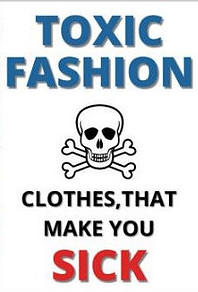 and then the final user, we are exposed to toxic fumes and poisonous substances leaching into our skin from the clothes that we wear. I bet you didn’t know that!
and then the final user, we are exposed to toxic fumes and poisonous substances leaching into our skin from the clothes that we wear. I bet you didn’t know that!
The skin is the largest organ in the body and absorbs harmful chemicals from fabric that is in contact with your skin. Sweating and body heat actually accelerates the absorption of these chemical substances into your skin.
Did you know that the smell of new clothes is formaldehyde, which is a toxic chemical and a carcinogen. Clothes that are labeled stain resistant and wrinkle resistant, have usually been chemically finished with formaldehyde because it has excellent preserving properties.
Toxic chemicals in clothes can cause skin irritations and allergies and also headaches and a sore throat. An allergic reaction to chemicals in clothing is known as textile dermatitis. A rash and itchiness are the most common symptoms if you have an intolerance. Synthetic fibers like nylon, polyester, spandex and acrylic, don’t breathe like natural fibers and make you sweat even more.
What Chemicals are in Clothes?
Beware of these chemicals used in clothing and footwear production. Toxic chemicals can be a combination of several different chemicals.
- Polyflourinated and perfluorinated chemicals (PFC’s) are used as surface protectors and finishes as they have special properties. These include resistance to fire and it repels water, oil, grease and stains,
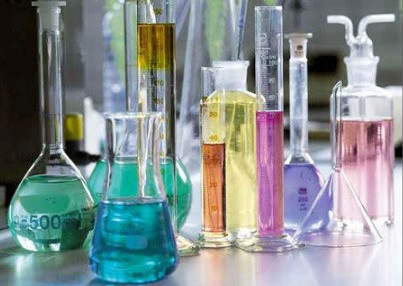 so PFC’s are used to make clothes waterproof and stain proof (can lead to hormone disruption and possible liver damage)
so PFC’s are used to make clothes waterproof and stain proof (can lead to hormone disruption and possible liver damage) - Perfluoroalkyl and polyfluoroalkyl substances (PFA’s) are the more specific chemicals from the group of PFC’s that are used and they are very hard to break down.
- Nonylphenol ethoxylates (NPE’s) are a class of organic compounds that are present in the majority of our clothing.
- Azo dyes is a very common synthetic that release aromatic amines which could cause cancer.
- p-Phenylenediamine (PPD), which is a chemical that can cause contact dermatitis and skin allergies.
- Formaldehyde is a carcinogen and is used to make fabric wrinkle free and prevent shrinkage. The founder of Patagonia, Yvon Chouinard, has boycotted formaldehyde. Wrinkled clothes are better for you than those smothered in chemicals.
- Flame retardants cause hormonal disruption
- Triclosan, nanoparticle silver and phthalates are used for anti-bacterial and anti-odor finishes.
- Parabens are present in many plastics and household cleaners, so look for natural cleaners or it can be made from vinegar, lemon juice, baking soda and essential oils.
These are the ways in which toxic chemicals in clothes end up in fashion products, and the alternative choices to select fashion products that are better for your health and for those that produce it:
1. Wrinkle Free Fabrics
Brand new clothes and wrinkle free fabrics have finishes where toxic chemicals, like formaldehyde and urea resins, are used. Formaldehyde is a chemical that is used to preserve dead bodies! It also prevents mildew, wrinkling and parasites during shipping, specially from China.
Formaldehyde has been linked to dermatitis and lung cancer. Any labels like “wrinkle free”, “easy care” and “shrinkage free” are known to release formaldehyde.
Alternative choice: shop second hand clothing where the chemical residue is considerably less, as clothes would have been washed numerous times. If second hand is not to your liking, then look at tencel, a type of viscose. Tencel is made from sustainably sourced eucalyptus. It uses a closed loop process and requires very few chemicals. Tencel has a fluid drape and is more resistant to wrinkling.
Discover more about tencel and cellulosic fibers in this post on Viscose fabric – the textile made from cellulose.
Tip: Always wash new clothes before you wear it the first time, this will get rid of excess toxic chemicals in clothes.
2. Flame Retardant and Weatherproof Finishes
Garments and footwear that have a waterproof and stain resistant finish, have been treated with 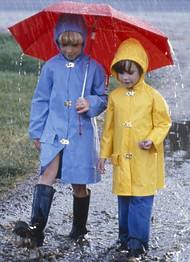 PFC’s (perfluorinated chemical or carbons). Exposure to PFC has been linked to kidney and testicular cancer and obesity. Manufacturing of PFC can cause environmental contamination of drinking water, surface water, ground water, dust and air.
PFC’s (perfluorinated chemical or carbons). Exposure to PFC has been linked to kidney and testicular cancer and obesity. Manufacturing of PFC can cause environmental contamination of drinking water, surface water, ground water, dust and air.
Clothing that is water resistant is normally made by using a group of chemicals called PFA’s (perfluoroalkyl and polyfluoroalkyl substances). Flame retardant finishes have been linked to birth defects, infertility, endocrine disruption, breast cancer and reduced IQ. It also gives off toxic fumes when it is burned.
Alternative choice: rather choose organic wool and fabrics free of PFC’s like waxed cotton. Organic wool is hypoallergenic and naturally water and flame resistant and our ancestors used wool as the weatherproof fiber.
Related post: What is Wool, the natural fiber to keep us warm.
3. Performance Based Fibers
Did you know that your skin discharges up to a pound of toxins every day? Synthetic petrochemical fibers and performance based fibers, like polyester, acrylic, nylon, acetate and triacetate, restricts the release of toxins through your skin. Wearing synthetic fabrics can cause headaches and nausea, respiratory problems, skin rashes and eczema.
Micro plastics are released from synthetic fibers every time it is washed and end up in our drinking water and kill aquatic life in our rivers and oceans.
Alternative choice: instead of synthetic fibers, choose natural textiles like hemp, organic cotton, linen, bamboo, silk and wool, which regulates the body temperature and allows your body to breath and detox naturally. Natural fibers biodegrade naturally and can be composted, whereas synthetic fibers are plastic, which do not biodegrade.
Related post: Synthetic fibers vs Natural fibers: which one will you choose?
4. Anti-Bacterial Textiles
To make clothing and work out gear anti bacterial and anti odor, synthetic chemical blends and fungicidals are used. These chemicals include triclosan, nanoparticle silver and phthalates, chemicals that have all been linked to cancer, DNA damage, hormone disruption and inhalation toxicity. The fitness industry is known to use these toxic chemicals in clothes and footwear.
Alternative choice: Instead use hemp, organic cotton, bamboo or tencel. Hemp does not require fertilizers or pesticides and is one of the most eco friendly fibers. It is also light and breathable, like linen. Tencel is a high tenacity cellulosic fiber which is made from eucalyptus tree pulp and the sources can be traced. It is a very absorbent and strong fiber.
Discover more about the benefits of using hemp in this post on Wearing Hemp Clothes – can it give you a high? and also the benefits of wearing bamboo in this related post: Why choose Bamboo Fiber Products.
5. Azo Dyes
Azo dyes are the most commonly used dyes in the fashion industry. Unfortunately Azo dyes release chemicals, known as aromatic amines, that have been linked to cancer. Denim, black clothing and dark colors, like black and brown, contain higher concentrations of p-Phenylenediamine (PPD), which is a chemical in the dye, that can cause contact dermatitis and skin allergies. 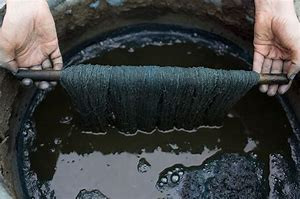
Formaldehyde is one of the chemicals in the chemical cocktail that makes up synthetic indigo dye for blue jeans.
Synthetic azo dyes and low impact dyes are discussed in this post Fabric Dye: how eco-friendly is it?
Alternative choice: Instead look for natural dyes that are free of Azo dyes and also new technologies like Indigogood foam dyeing and jeanologia nano-bubble technology, that is used to produce eco friendly indigo coloring. Natural dyes use plants and other natural substances to color the fibers. Discover more about natural dyes and the differences between natural and synthetic dyes in this related post on What is fabric dye?
Natural indigo is eco friendly and provides job opportunities for artisans. You can read more about Archomas Advanced Denim Technology, which is based on sulfur dyes and use less water and electricity, in this post on the 10 Best Organic Cotton Jeans Brands.
Discover more about Indigo foam dyeing and Jeanologia nano bubble technology in this related post on the 8 Best Green Jeans Denim Brands.
6. Insecticides in Conventional Cotton
Growing conventional (non organic) cotton accounts for 25% of insecticides that are used around the world. 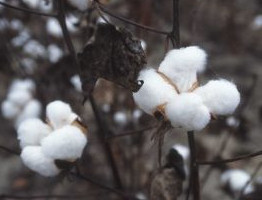 So it is a highly chemicals intensive crop. Residues from pesticides, herbicides and fertilizers make their way into the cotton fibers.
So it is a highly chemicals intensive crop. Residues from pesticides, herbicides and fertilizers make their way into the cotton fibers.
Some of these chemicals used in clothing include softeners, silicone waxes, flame retardants, petroleum scours, heavy metals, ammonia, and formaldehyde. Exposure to even the smallest dose of pesticides have been linked to fetal damage, sterility in humans and brain damage.
The growing and harvesting of organic cotton uses 71% less water and 62% less energy than conventional cotton. It conserves land biodiversity, making it the more environmentally-friendly choice.
Alternative choice: choose organic cotton, which is better for your body and also our planet.
Related post: What is Organic Cotton Clothing?
7. Chromium in Leather
Ninety percent of leather tanning is done with chromium and other toxic chemicals. Tanning is the process that is used to turn animal skin into usable leather. Chromium has many nasty health side effects, including rashes, nosebleeds and respiratory problems.
Chromium is unfortunately also notoriously not disposed of safely, leading to water pollution and poisoning of the food supply, and having a big negative effect on the environment. 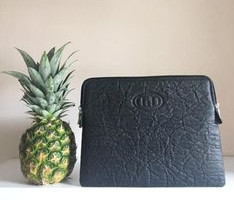
Only ten percent of leather tanning is using the vegetable tanning process, which is a natural process but takes much longer than chromium tanning.
Alternative choice: choose vegetable tanned leather and innovative leather alternatives like Pinatex (from pineapple leaves) and Muskin (mushroom leather). Discover more eco friendly leather alternatives like Desserto cactus leather, grape or vine leather, Frumat apple leather and even mango leather in this related post on 5 Innovative textile Solutions for Vegans.
Non-vegetarians also have the option of Fish Skin Leather – is that really possible?
Why You Want to Avoid Toxic Chemicals in Clothes
You have now seen what chemicals are in clothes and these are the harmful effects and health implications associated with chemicals used in clothing:
- Skin rashes and skin allergies, eczema and textile dermatitis.
- Headaches and nausea.
- Infertility in humans and birth defects.
- Disruption to the endocrine system and hormonal imbalances.
- respiratory problems.
- Various cancers including breast, lung, kidney and testicular cancer.
- Brain damage.
If you have an intolerance, have it tested here to see which chemicals and foods you should avoid.
Tips to Avoid Chemicals used in Clothing
Beware of what chemicals are in clothes and select fashion that is better for your health, 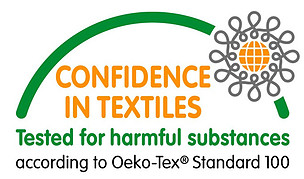 better for the people making it and better for the environment:
better for the people making it and better for the environment:
- Always wash new clothes to remove toxins, before wearing then.
- Look out for alternatives to real leather.
- Look out for organic fibers and organic products.
- Buy second hand and vintage.
- Avoid buying clothes made from synthetic, petroleum based fibers.
- Buy products made from natural fibers like hemp, linen, wool, bamboo, silk and organic cotton.
If you have any questions or suggestions about toxic chemicals in clothes, then please leave your comments below and I will get back to you.

I noticed my washing machine rinse cycle seems to have some kind of visible residue on top of the water. It is not noticeable when it rinses out. My machine is cleaned regularly so it’s not that. It is much more noticeable when black clothes are in it, possibly due to contrast. I know we had issues with our water at our previous house, but it’s there at the new place and the water is ? better. Could it be residual from being washed repeatedly at the old house or could it be whatever’s the fabric was treated with. It hasn’t washed out and still shows with clothes that I’ve washed a few times here. Thanks!
As I am not familiar with your washing machine, the washing powder that you use, the temperature you wash at, the level of hardness of your water, or the country in which you live, I suggest you contact your washing machine service department and ask their guidance. All the best.
You didn’t make clear that organic clothing just means the base fiber was grown without chemicals, however there are no rules about what fabric treatments can be applied after that. And as you point out those treatments are the worst offenders because they are not left-over traces, but DESIGNED to stay as part of the fabric for it’s entire life. So organic clothing and bedding can be just as problematic with all the chemicals you mention above apart from the growing chemicals. GOTS and other ‘eco’ standards try to restrict the use of the worst chemicals but still many are allowed and no-one can or will tell you which are used in any product. I’m sensitive/allergic to something in almost all clothes and for me clothes and bedding are a nightmare. I chased up two organic clothing manufacturers to ask what chemicals they use as their fabric treatments and they both refused to give any information. I asked a textile technologist at UNSW if he would help me to isolate the chemical that causes my issues and he point-blank and rudely refused, suggesting I was trying to discredit the entire textile industry. You only have to look at most ‘organic’ bedsheets that are beautifully wrinkle-free to realise that there is an issue here.
Do you (or anyone) know of a manufacturer that provides wrinkly, harsh, fabrics that are produced without ANY surface treatments?
I am sorry to hear about your allergies and problems with fabrics and fibers. Have you had an allergy test done to find out what you are actually allergic to? That would be my first step to eliminate possible chemicals. Whatever your intolerance, Intolerance Lab will find it and pinpoint it. This is a link that you might find helpful.
Once you know which chemicals are causing problems, you then know what to look for in fabrics.
Thanks but that’s the problem; a) medical science does not test for inorganic substances, they believe only proteins cause true allergies, and b) no-one knows which chemicals to test for even if they believe. Out of the thousands that are used in clothes, which do you test for? No-one does such tests 🙁
If nobody is doing the testing you require, maybe there is a business opportunity for you to find out which chemicals to test for, and do the testing. All the best.
This was a really interesting and eye-opening article! I had never thought about the potential for toxic chemicals in my clothing before.
I really liked that you provided more eco-friendly alternatives for each type of toxin and gave generalized instructions like always washing new clothes before wearing them. This made your article very practical in addition to being informational.
Thanks!
Hi Lisa, it is very scary when one really starts looking into what goes into your clothes. I started looking into it because of family members with eczema, and was shocked by what I discovered. I hope it helped you.
Hey there! Your post was very interesting and educational to read through. I was actually quite surprised to see that the fresh clothes smell at those fancy stores was actually a toxic chemical. This will make me more mindful when I go shopping. I also like that you added alternatives to these kinds of clothes rather than just telling people what they shouldn’t wear. Thanks again for this informative and entertaining article!
It is surprising how most people are not aware of chemicals that are lurking in our clothes, and how harmful they are to our skin, and also the environment.
Very informative. I have never care more when it comes to new clothing. To be honest, I’m one of those persons that buys cloth and put them on without getting them washed. To me, I don’t see any use getting them washed as they’re new. But now, knowing how dangerous toxic chemicals are and how they come in our clothing now makes me to have a rethink. I’ll heed to your words and do what I can and make sure I don’t get these chemicals on my skin.
Have you ever thought how many other people might have tried on the garment you are buying? Or where did it go after it was made? Piled up on a dirty warehouse floor before being shipped in unknown circumstances? So yes wash new clothes to get rid of chemicals used in clothing, but also to get rid of dirt. Hope this helps you.
Hello there, thanks a lot for sharing this wonderful piece of information here with us. I must say i really did enjoyed going through your review as it contains valuable information’s people needs to be aware of before getting some clothes. I know a lot of people are not aware of how much that can be found in clothes, i will share this just to create awareness
Most people are not aware of what toxic chemicals in clothes are used, so best to spread awareness
Hello there! Thank you very much for sharing this article on “beware of toxic chemical in clothes”. I’ve gone through it and it’s a really good one as it is well detailed and contains valuable information and it’s also very helpful. I’ve read a bit about chemicals in clothes and how dangerous they are to our health, if really baffles me because a lot of people are not aware of this. I love your idea about washing new clothes before you wear them. I’ll share this article with friends, thank you.
Most people are not aware of what chemicals are in clothes and the harm they can do to your health and the environment. Washing your new clothes before you wear it will help towards getting rid of toxic chemicals in clothes, but it is always better to shop organic when you can.
Thanks so much Lin for sharing this information to help more people to know why is important to know more about how out clothing is made, I like to buy natural fiber clothing and it’s ok if they don’t look nice all the time, after reading your article it’s clear for me that those clothing that are made to look perfect all the time are not good for anyone health, this information is quite sad, as we are used to see people asking to be dress perfectly, with no wrinkles, with cloths that looks like new every time, hmmm, I will forward your article to my sons, I’m sure they will love to know more about this topic.
Many people do not know what chemicals are in clothes and that the toxic chemicals in clothes are bad for your health and the environment. So it will be good to share the information, thank you.
Well. to be honest, before reading this article I had not given much thought to toxins that might be in my clothes. Though, I have to say, it makes sense that “wrinkle free cotton” doesn’t just grow that way. Worse, I’ve seen many bedsheets that are labeled wrinkle free. I guess I’m gonna think about it more that next time I make a purchase.
I think most people are not aware of toxic chemicals used in clothing and that it is bad for your health and the environment. So yes wrinkle free would have been treated with chemicals that you certainly want to avoid.
Help Line, I’m learning all this for the first time. I have worn so many types of clothes from time and I didn’t know that there is this much toxic chemicals in clothes. All the same this information really shows me how to check to be sure if what I use. I’m happy to learn this and I will most definitely love to get better clothing for myself.
I think most people are not aware of what chemicals are used in clothing and that the toxic chemicals in clothes are bad for your health and the environment.
Hello Liné, this has been a very good and quality article you have here and we all have learned from it at one point or another in this article. Having a clean clothes free of chemical matters a lot as some of these chemicals in clothes can be harmful to the skin. Great content
I think most people do not know what chemicals are in clothes and that the chemicals used in clothing is bad for your health and the environment.
Wow!! I had no idea. Your article is informative but frightening. I know that fabrics are treated by I had not idea that 8000 different chemicals were used. Nor have I ever thought about what chemicals are used for what purpose. As you point out, I check food labels for ingredients. I have going to save your article as a reference. I shop at thrift stores to save, but now I am going to shop there for health.
I think if textile and garment producers had to label all the ingredients in their products, then it will be a completely different story with chemicals used in clothing. Thrift stores often have some amazing finds, so yes it is good for your wallet, your health and the environment with products getting a second life.
Hey Line, thanks so much for sharing this information on your website. You’ve choose to use your social platforms to enlighten others and for that i am grateful. I can’t believe it took me almost 22 years of living to find out that chemicals are on clothes. It is amazing and scary at the same time, my question is, Are there any methods to alleviate the chance of wearing chemical saturated clothing.
My suggestion is to check labels on clothes and shop natural fibers and organic whenever you can. The chemicals used in clothing, and specially synthetic, petroleum based fabrics, are not good for any of us or the environment. I hope this helps.
I´m glad I found your site and specifically this page as I don´t think there is enough awareness in general about toxic chemicals in clothes. Its quite astonishing to learn that around 8,000 synthetic chemicals are used in the fashion industry during clothing manufacture. I do think the fashion industry has a lot to answer for when it comes to manufacture and design with the impact on society in different ways. I was asking myself so how do I avoid these chemicals and then I read your point about buying second hand or “vintage”. Organic is a great suggestion but isn´t that just the fashion industry jumping in on the bandwagon to hike up prices? This suggestion is I think extremely good; to buy “hemp, linen, wool, bamboo, silk and organic cotton”. But again how to buy economically or reasonably priced? Sorry this comment is so long but another thought is the huge mark up that they place on clothes in the UK, elsewhere in the World e.g. USA, Mexico, prices are much more reasonably priced, often for the same article! Any suggestions?
Growing organic cotton is not just the fashion industry jumping on the bandwagon, it is far better for the growers and farmers that are not exposed to toxic chemicals that are being sprayed on the crops. It is also better for the environment and the factory workers that are not breathing toxic fumes while working with the fibers and fabrics.
My suggestion is to buy quality, not quantity, which will last you a lot longer and is better for your wallet in the long run. Hope this helps.
WOW! After reading this, I am floored! I actually knew this from way back but have not thought about it for quite some time. You did an excellent job describing the dangers and risks and what to look out for! I love your advice to always WASH your new clothes BEFORE wearing them. This is something I have ignored and need to take heed in order to protect myself from the toxic chemicals. I am very sensitive to detergents also, so they go hand in hand. Thank you very much for reminding me about protecting my body from these dangerous substances. John
Hi John, Washing your clothes before you wear them for the first time does help to get rid of excess chemicals in the fibers, and if you are sensitive to detergents then choose a natural detergent that will not affect your skin.
Hi John, Washing your clothes before you wear them for the first time does help to get rid of excess chemicals in the fibers, and if you are sensitive to detergents then choose a natural detergent that will not affect your skin.
WOW! After reading this, I am floored! I actually knew this from way back but have not thought about it for quite some time. You did an excellent job describing the dangers and risks and what to look out for! I love your advice to always WASH your new clothes BEFORE wearing them. This is something I have ignored and need to take heed in order to protect myself from the toxic chemicals. I am very sensitive to detergents also, so they go hand in hand. Thank you very much for reminding me about protecting my body from these dangerous substances. John
Thank you for your kind comments, it is important to be aware of the toxic chemicals in clothes, and there are more in synthetic petroleum based fabrics.
I’ve read a bit about chemicals in clothes and how dangerous they are to our health, if really baffles me because a lot of people are not aware of this, I’ll share this article around so that people can learn from it. I think the best way to curb this is by checking properly before wearing a purchased wear in order to be safe.
It is as you say that many people are not aware of toxic chemicals in clothes because the manufacturer does not have to tell us. It is important to check for natural fibers and buy organic if you can.
OMG! Who would have actually taken the time to consider that some dresses may have very toxic and dangerous chemical in their construct. Seriously, this can lead to some very harsh and bad reactions form our body to it. What you shared here is really great to see and I value it well.enough. thanks so much for sharing here with me. Well appreciated
There are far more toxic chemicals in clothes than most people realize. We make sure that our babies are wearing the right clothes and then as we grow up we forget that the same principles still apply and that we should check what we put on our bodies.